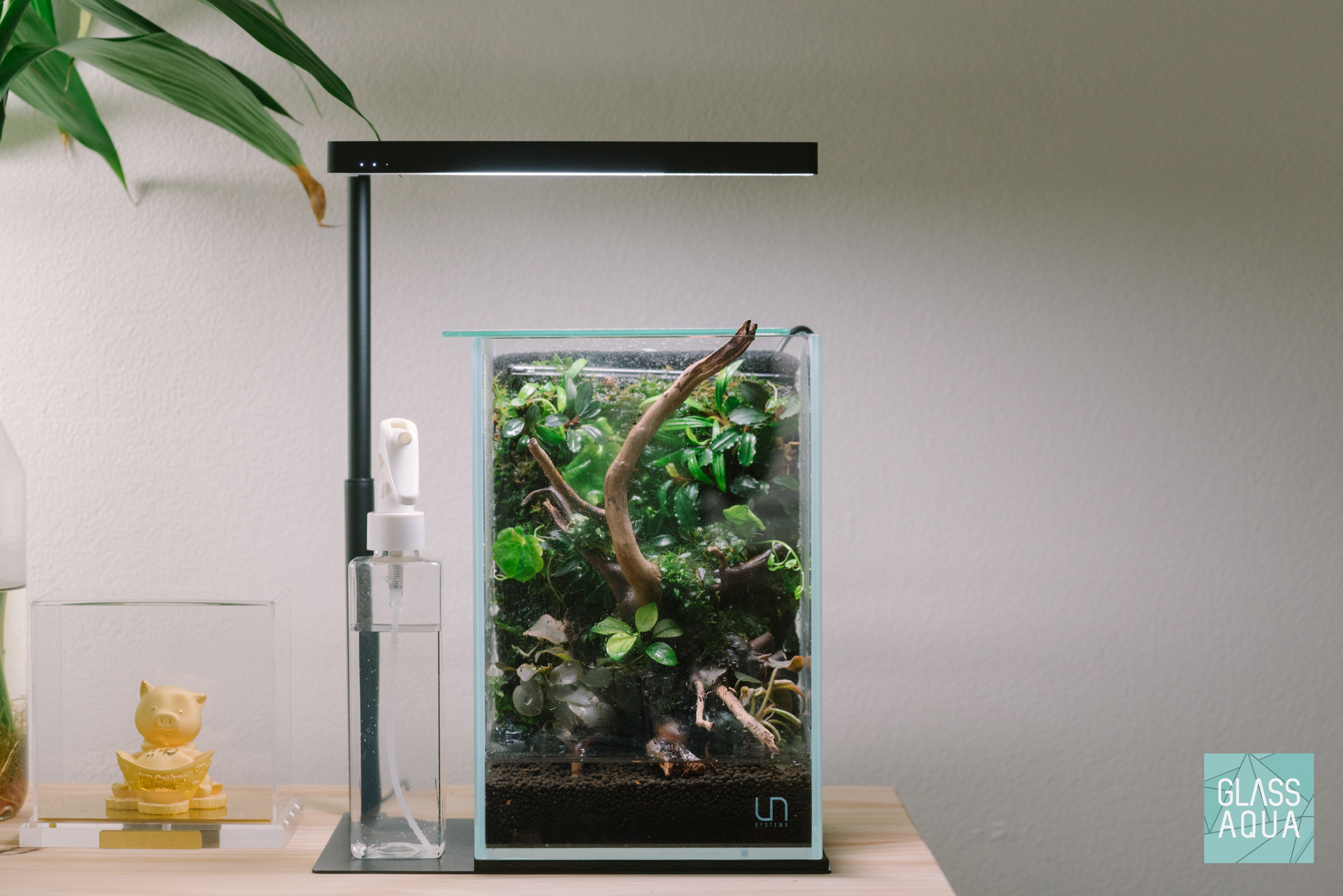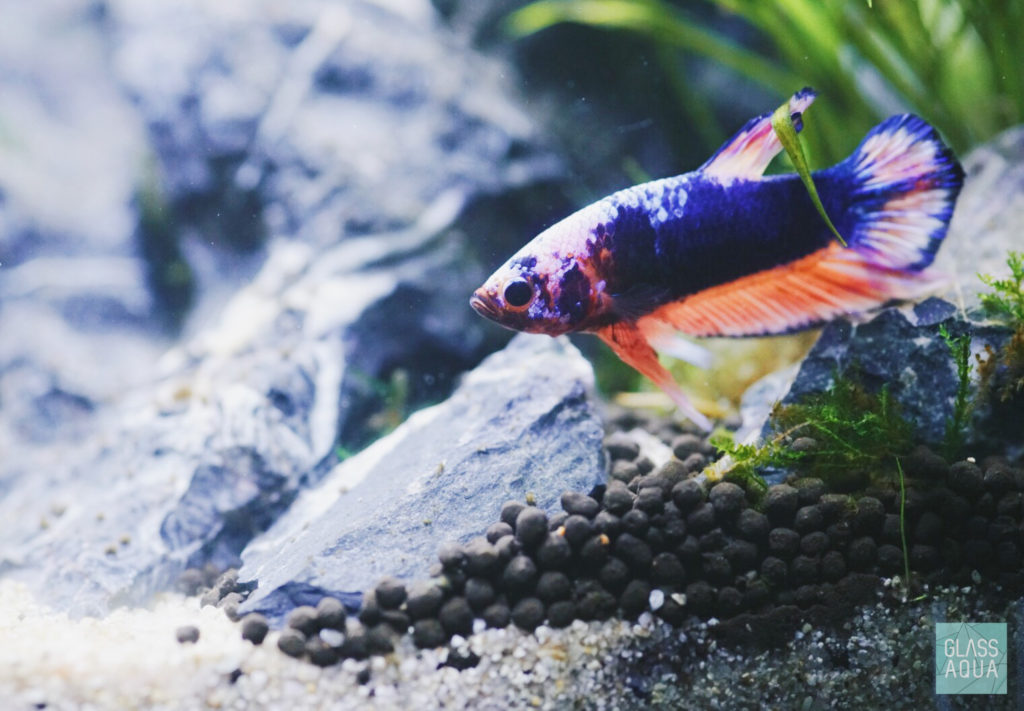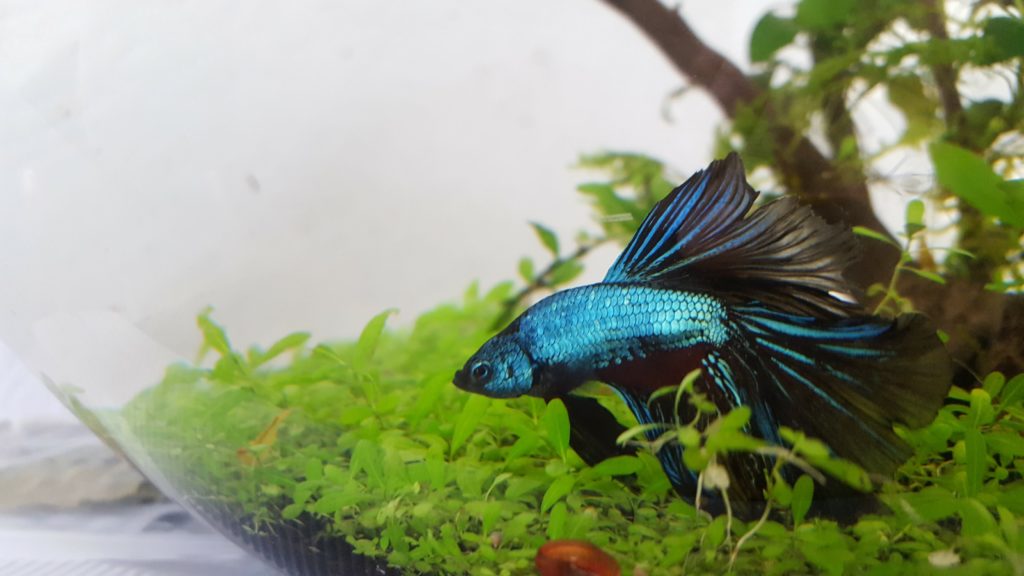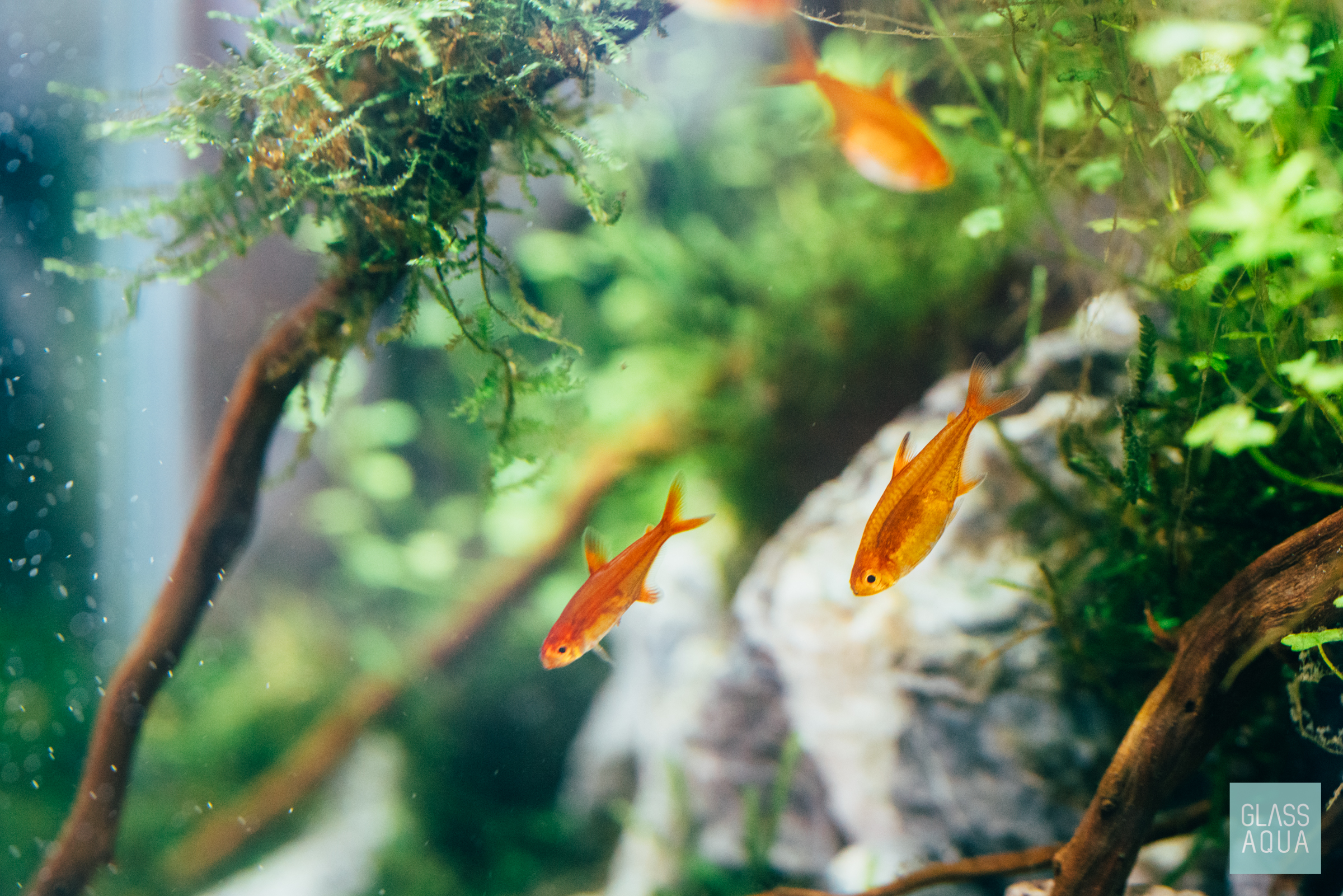Tank Maintenance
Keeping your new Betta tank clean and stable is very simple. Twenty-five percent water changes should be done weekly so that nitrates can be removed, and KH replenished so that PH does not drop. If you have gravel or sand, you can vacuum the gravel once or twice a week to keep it clean of trapped debris. The filter should be cleaned once a month, clearing any obstructions to the intake and debris. Make sure to rinse filter pads or media with old tank water, or dechlorinated water. Rinsing with tap water will kill off the beneficial bacteria growing in the filter media.
Betta Food
Good quality live or frozen foods are ideal for Betta development, such as bloodworms, daphnia, and wingless fruit flies. Good quality Betta pellets are good too, but Bettas fed a varied diet of live or frozen live food tend to develop and heal from wounds faster. Make sure to feed only how much a Betta can eat in a few minutes, and to remove uneaten food so that it does not foul up their water. Bettas will do best fed twice a day, but feeding once a day is ok too. A good gauge is to watch that your Betta is not losing weight.
Daily Flare Exercise and Rest
Just like us, Bettas need their beauty rest and their daily exercise to keep their fins in tip-top shape. Lucky for us, healthy Bettas are very territorial and will flare when they see another Betta. The easiest way to give them their daily flare exercise is to hold a mirror to their tank for five minutes so they can flare at their own reflection. Do not do this for more than five minutes or they might flare too much and rip their fins. Some Betta owners have two Betta tanks next to each other with a card in between to block them from seeing each other. They remove this card daily for the Betta’s flare exercise. Do not let Bettas see each other constantly, or they can stress out.
At night, Bettas need a long rest period with their aquarium lights off. If you watch them, you can see them perched in their leaves or favorite Betta hammocks or caves to “sleep.”
Tank Mates
Bettas are called fighting fish because male Bettas will fight other Bettas to the death if they do not have room to escape. Some females can be just as aggressive. Whether your Betta will attack other tank mates or not will depend on his personality. Sibling females can be housed together if there are at least five, with lots of hiding spaces and decor or plants that block their line of vision. The best tank mates for Bettas are peaceful ones that do not nip. Examples are otocinclus, cories, plecos, glass catfish, and snails. Shrimp will not harm Bettas, but they usually and eventually get eaten. Be careful that some of the bigger algae eaters will eat Bettas if they become big enough and have the opportunity. Avoid tetras because they are known to be nippy. Colorful and flashy fish, such as guppies and mollies, might look like another male Betta so they should be avoided too. Other fish in the same anabantoid family as Bettas, like gouramis, should also be avoided.
Natural Supplements and Remedies
Kattappa Indian Almond Leaves (IAL) are a Betta’s best friend, besides you, of course. Besides softening water, the leaves leach out tannins, vitamins, and nutrients that help strengthen Betta scales, and have antioxidant, some antibacterial and anti parasitic characteristics. IAL only kills certain parasites though, so it is not something that can cure bacterial infections or external parasites alone.
Aquarium salt is a useful preventative for some bacterial and parasitic infections. This is not table salt, but aquarium salt sold at fish stores. Mix and dissolve 1 teaspoon per gallon of water outside of the Betta tank before adding to his water.
Epsom salt helps with constipation, as well as bloat symptoms from swim bladder disorder or dropsy. Use 1/4 teaspoon per gallon of water. Mix and dissolve the salt first before adding to the tank. Do not use aquarium salt at the same time as Epsom salt.
Cooked peas can also help a Betta with constipation. Simply boil or microwave some frozen peas, shell them, and chop into pieces small enough for your Betta to eat.
Garlic, surprisingly, is good for Bettas too. Garlic juice mixed with food can boost Betta immune system and improve their appetite. Do not feed the chopped garlic to your Betta because it is too strong.
Products such as Seachem’s Stress Guard and API Stress Coat help Bettas heal ripped fins, damaged slime coat, and calm them down from stress. Vitamin supplements, such as Vitachem, help Betta fins heal faster as well.
Illness and Medication
Things can go wrong even if we try our best to keep things perfect for our Bettas. Opportunistic bacteria are always present in aquariums, and bad bugs can hitchhike from live foods from bad sources, plants, snails, or other fish. Here are some common ailments and must-haves in the Betta medication cabinet. New fish should go through a period of quarantine and treated with medication to prevent hidden parasites from entering the aquarium. You should always treat your Betta in a bare hospital tank if possible. Do not forget to medicate his home tank as well if you are treating for parasites. Remember to sanitize all tools to avoid contaminating other tanks. Never mix medications unless otherwise noted, and run carbon through a filter to remove medication once treatment is done. Finally, always follow the full course of medications to prevent bacteria or parasites from becoming immune.
Prazi-Pro, or any medication with the active ingredient praziquantel, is used for internal worm parasites. This is a very safe medication that should be part of a quarantine regime for new fish. The telltale symptoms are Bettas losing weight even though they are eating, and stringy white poo. Prazi-pro is difficult to mix with water, so this one should definitely be mixed with dechlorinated water before being added to the fish tank. It is safe to use with plants, snails, and will not affect the aquarium cycle.
Metronidazole is a good treatment against internal protozoan parasites such as heximita. Symptoms include loss of appetite, lethargy, and white stringy poo. Metronidazole is a very safe medication to use, and should also be used on new fish in quarantine.
Methylene blue treats fungal infections and nitrate poisoning. It is also good for bringing oxygen into a fish’s bloodstream. This medication affects crustaceans and the biological filter.
Mardel Coppersafe and Seachem Paraguard are essential for curing a nasty bug called velvet, and other common external parasites, such as ich and flukes. Velvet can be easily detected by a gold or rusty sheen on a fish when shined on by a flashlight. Ich is characterized by white dots on a fish that look like salt. Flukes are visible parasites hanging on fish scales or sticking out of their gills. If you see these parasites on your fish, medicate immediately because they damage Betta gills quickly. Coppersafe is very effective against velvet and ich adults as well as eggs, but it affects the biological filter and crustaceans. Paraguard does not affect the biological filter, but will not kill dormant parasite eggs.
Kanamycin is a gram-negative antibiotic that is good against columnaris, kidney infections that cause dropsy, or tuberculosis. Furan 2 is a strong broad spectrum antibiotic for a wide range of bacterial infections. The two can be used together very effectively against most bacterial infections. Kanamycin will not affect the biological filter. Furan 2 will affect the biological filter as well as plants and crustaceans.
Levamisole is a very effective dewormer used against a highly contagious and troublesome internal parasite called camalanus worm. This worm is characterized by little red worms sticking out of a Betta’s anus and must be treated immediately before damage is too far gone. Levamisole is not always found in fish stores, but available online.
Here is a quick recap of everything you need for a healthy, pampered Betta:
Ideal Water Parameters
- PH: 6.8-7.5, will tolerate 6.5-8.0
- Temperature: 78-80F, will tolerate 74-86F
- Ammonia: 0ppm
- Nitrite: 0ppm
- Nitrate: below 20-30ppm
- GH: 5-8dH or 70-180ppm, will tolerate 5 – 20 DH or 70-300 ppm
Tank setup
- 3+ gallons
- Cycled
Filter
- Low current
Heater
- Thermostat set to heat to 75-80F
Decor
- Aquarium safe
- No holes to trap your Betta
Live plants
- Mosses
- Java ferns
Food
- Feed daily to twice daily.
- Live, frozen live, or good quality Betta pellets
Tank maintenance
- 25% weekly partial water change
- Gravel vac twice weekly
- Clean filter monthly with dechlorinated water
Exercise and rest
- Flare exercises daily
- No more than 5 minutes for flaring
- Have a dark period at night for Bettas to sleep
Tank Mates
- Peaceful fish that do not nip
- Snails
- No Bettas, gouramis, guppies, or mollies
Supplements
- Indian Almond Leaves – soften water, boost immune system
- Aquarium salt – prevent some bacterial and parasitic infections
- Epson salt – helps with swim bladder disorder, dropsy, and a bloated Betta
- Garlic – boosts immune system, prevents some internal parasites
- Vitachem, Stress Guard or Stress Coast – helps heal fins
Common Bugs and Medication
- Metronidazole – Internal protozoan parasites
- Prazi-Pro – Internal worm parasites
- Methylene blue – Nitrate poisoning and fungus infections
- Mardel Coppersafe, Seachem Paraguard – Velvet, Ich, flukes, and other external parasites
- Furan 2 – broad spectrum bacterial infections
- Kanamycin – gram-negative bacterial infections, such as Columnaris or Tuberculosis
- Levamisole – Camalanus worms
And there you have it! Big thanks again to Mindy for sharing her knowledge. If you have any questions, we’re sure she’ll have some good tips and tricks to share. You can find her on her Instagram @bettashrimpies.
This article was written by Mindy AKA Bettashrimpies. All links lead to her social media platforms and all words and photos without GlassAqua watermarks belong to her.












